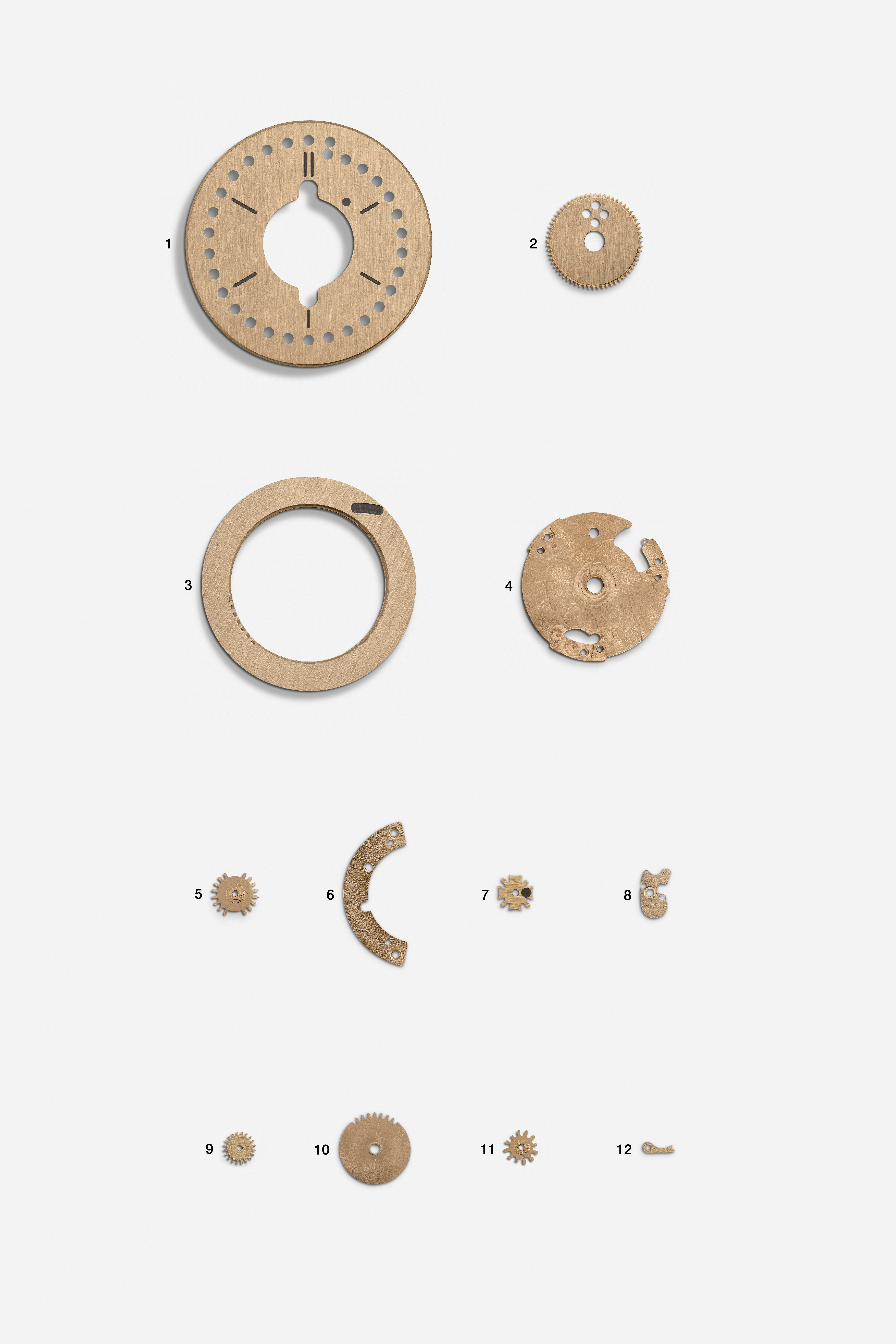Ochselin il suo perpetuo lo fa vedere smontato.
Non capisco neanche se è questo...

Matteo
 MechanicsHow is Ludwig Oechslin’s perpetual calendar function unique?
MechanicsHow is Ludwig Oechslin’s perpetual calendar function unique?Oechslin executes his perpetual calendar as a gear system comprising 9 additional parts and 3 modified parts (*).
- Dial*
- Month disk
- Date disk*
- Baseplate for perpetual calendar mechanism
- Date ratchet wheel
- Bridge
- 4 year ratchet wheel
- Another bridge
- In-between wheel
- 12-hour ratchet wheel*
- Month ratchet wheel
- Additional tooth
Each part is designed to solve multiple problems at once. Like in software engineering and architecture, a simpler solution is more difficult to achieve, but technical elegance brings significant benefits. If a solution requires fewer parts, there are fewer interactions between parts, and fewer potential sources of manufacturing error. Oechslin strives to develop the simplest possible solution because he wants a more reliable result – and he enjoys the intellectual challenge. His ability to reduce a perpetual calendar down to 9 additional parts is the only way ochs und junior, a company with 4 employees, could bring to market an original perpetual calendar function. Oechslin replaces the R&D and quality assurance departments with greater upfront thinking.
What was Oechslin’s motivation for using gears?With their turning wheels, gears lend themselves to Oechslin’s goal of displaying the date, month and year in analog fashion, like the hands on a watch. The calendar information on Oechslin’s perpetual calendar is readable from the same distance as the time. Gears also allow Oechslin to invent solutions which use fewer parts. Fewer parts leads to higher reliability – and easier servicing. It’s why ochs und junior can offer a lifetime guarantee on the parts designed by Oechslin. Finally, his gear system enables all of the functions to be adjusted quickly via the crown; there is therefore no need for additional pushers like in conventional perpetual calendars. It is fun to set! Check out the “Forwards and backwards” video.
What is the base movement?The Ulysse Nardin UN-118.